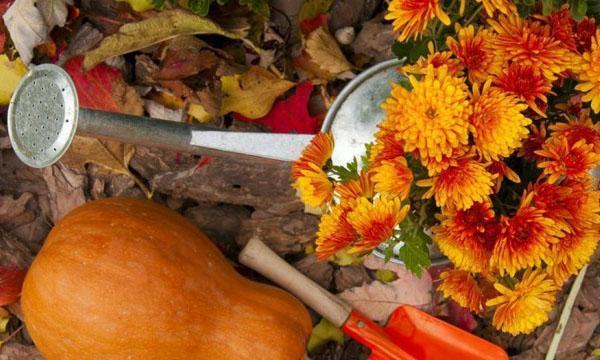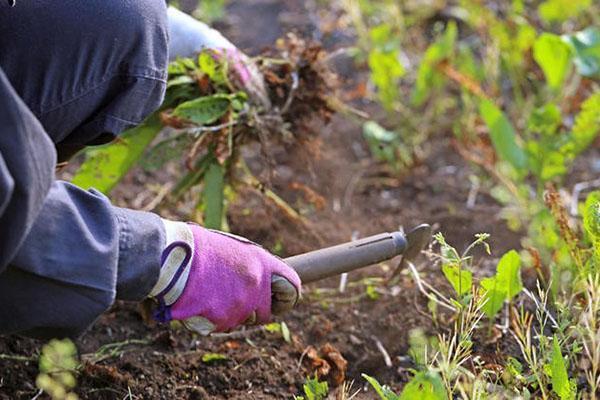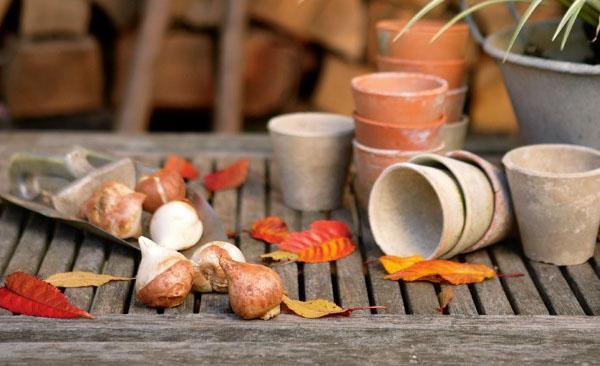What will we do on the flower beds in September?
 In September, the sun at the summer cottage becomes less, the days are shortened, at night the air cools to such an extent that in the morning abundant dew falls on the grass. With the onset of autumn, flower beds, alpine hills, ornamental shrubs require special attention.
In September, the sun at the summer cottage becomes less, the days are shortened, at night the air cools to such an extent that in the morning abundant dew falls on the grass. With the onset of autumn, flower beds, alpine hills, ornamental shrubs require special attention.
By the end of summer, flowering of many annual plants is completed. Unpretentious marigolds, scented tobacco remain to decorate the flower beds, salvia, nasturtium and some other species. The splendor of September flower beds is provided by dahlias and gladioli. But their time is running out.
Annuals in September flower beds

Carrying out such work on flower beds is very important, since they are rarely transferred to a new place, nutrients from the soil are gradually washed out, fungal spores accumulate, soil pests and dangerous bacteria settle.
Popular annuals can reproduce by self-seeding. If this is not included in the plans of the summer resident, the faded heads are immediately cut off, without waiting for the formation of seeds.
Autumn care for perennials in a flower bed
 The vacant space in the flower beds can be taken by young perennials... Until mid-September, overgrown specimens can be transplanted and divided. The dug soil for planting is not only cleared of weeds and remnants of old vegetation, but also fertilized with the introduction of humus and potassium-phosphorus mixtures.
The vacant space in the flower beds can be taken by young perennials... Until mid-September, overgrown specimens can be transplanted and divided. The dug soil for planting is not only cleared of weeds and remnants of old vegetation, but also fertilized with the introduction of humus and potassium-phosphorus mixtures.
Planting is planned so that in the future perennials do not interfere with each other and have enough nutrition for growth and flowering. At the same time, they are guided by the individual characteristics of flowers.
For example, for daisies, 20 cm between curtains is enough. Monards and bells, aquilegia and rejuvenated... For their seedlings, intervals of about 30 cm are sufficient. Tall species with lush foliage and powerful peduncles, for example, for mallows, digitalis, perennial delphiniums, the distance to honey with seedlings is increased to 40-50 cm.
September is the time of planting bulbous spring flowering dates. At first, muscari, redwoods, crocuses find their place in the flower beds. Then comes the turn of daffodils and tulips, beloved by summer residents.
In the fall, even persistent perennial crops gradually lose their decorative effect. To support plants and ensure their future bloom:
- dried leaves, stems and peduncles are cut out;
- the soil is loosened and densely covered with mulch, which protects the roots and bases of the stems from the impending cold weather.
 In irises, the aerial part does not die off, so the foliage is not removed, but shortened by removing wilted or fungal ends of the leaves.
In irises, the aerial part does not die off, so the foliage is not removed, but shortened by removing wilted or fungal ends of the leaves.
Plant residues from flower beds are often infested with pests and diseases. They must not be composted. It is better to burn such plants, and use the ash as a potash fertilizer and a mild deoxidizer.
Garden vines and shrubs are pruned in September, removing weak, faded, damaged shoots. Before winter, the strength of the supports of tall plants is checked, peat and spruce branches are harvested to shelter roses, clematis, hydrangeas and other shrubs.
As the air and soil cools, the plants require less moisture. If you keep the summer watering regime, the risk of root decay increases, so in September the flower beds are watered less often, and at the end of the month watering is stopped altogether.
Dahlia and gladioli care in September
 While it is warm outside the window, the country flower beds are buried in the flowers of gladioli and dahlias. But frosts can cause serious damage not only to flowers, but also to the stems. If the root part is damaged, there is a high risk of weakening or death of the plant. Therefore, dahlias and flowering gladioli sprinkle with a layer of mulch and stop watering them.
While it is warm outside the window, the country flower beds are buried in the flowers of gladioli and dahlias. But frosts can cause serious damage not only to flowers, but also to the stems. If the root part is damaged, there is a high risk of weakening or death of the plant. Therefore, dahlias and flowering gladioli sprinkle with a layer of mulch and stop watering them.
This measure will help to prolong the beauty of summer cottages, but from the middle of the month in most regions it is time to dig out bulbous crops. Before the onset of stable frosts, they extract from the soil dahlias, gladioli, begonias, as well as thermophilic bulbous species that will not survive the frosty winter.
When the planting material is collected, it is washed and kept in a solution of potassium permanganate or fungicide, then carefully dried and stored. To prevent the formation of mold, containers should be easily ventilated. Dahlia tubers, which often dry out over the winter, can be dipped in whipped egg white before drying. It will turn into a film and keep moisture inside the tubers.
Suburban water care in September
 The garden pond is also changing with the beginning of autumn. Coastal plants like flowers in flower beds, require pruning or cleaning. Winter-hardy aquatic species are lowered so that they are at a depth of at least 60 cm. Heat-loving plants are removed in the second half of the month and transferred to more suitable conditions.
The garden pond is also changing with the beginning of autumn. Coastal plants like flowers in flower beds, require pruning or cleaning. Winter-hardy aquatic species are lowered so that they are at a depth of at least 60 cm. Heat-loving plants are removed in the second half of the month and transferred to more suitable conditions.
Leaf fall begins in September. Bright foliage looks beautiful on the water mirror, but when it settles to the bottom, it rots, negatively affects the transparency of the water, and forms a layer of silt. Therefore, it is better to cover the pond with a net that will trap foliage, branches and other debris blown by the wind.